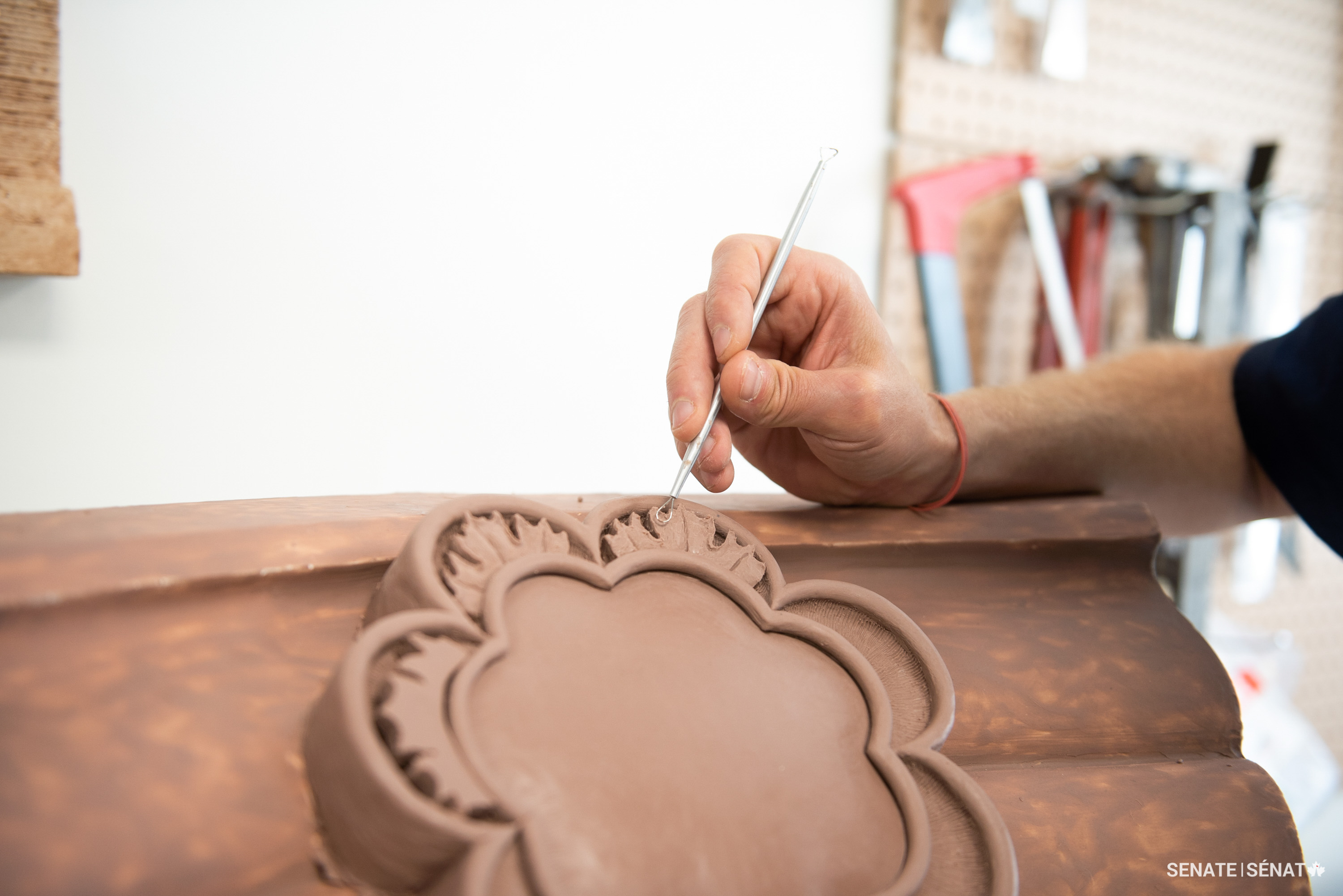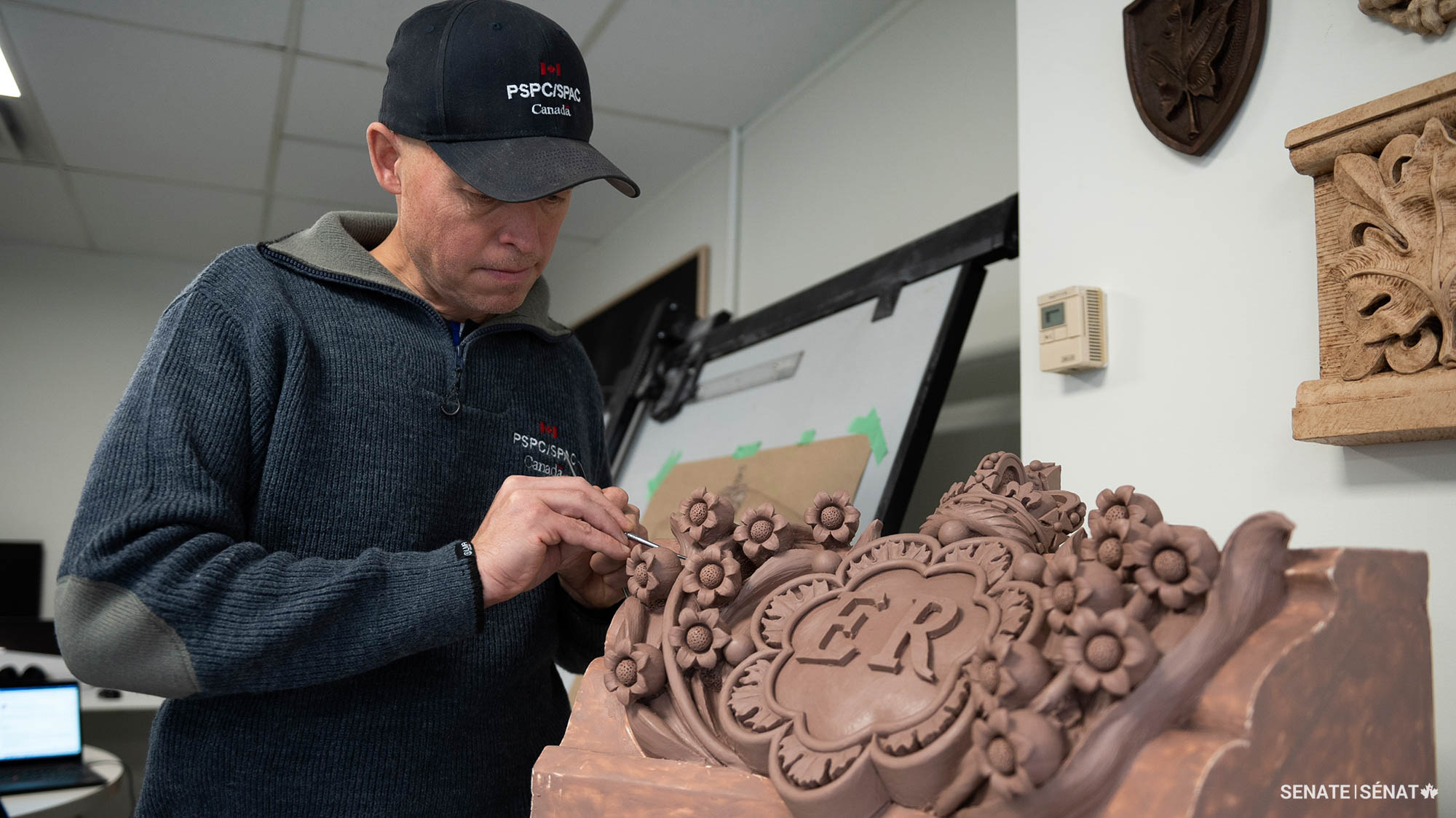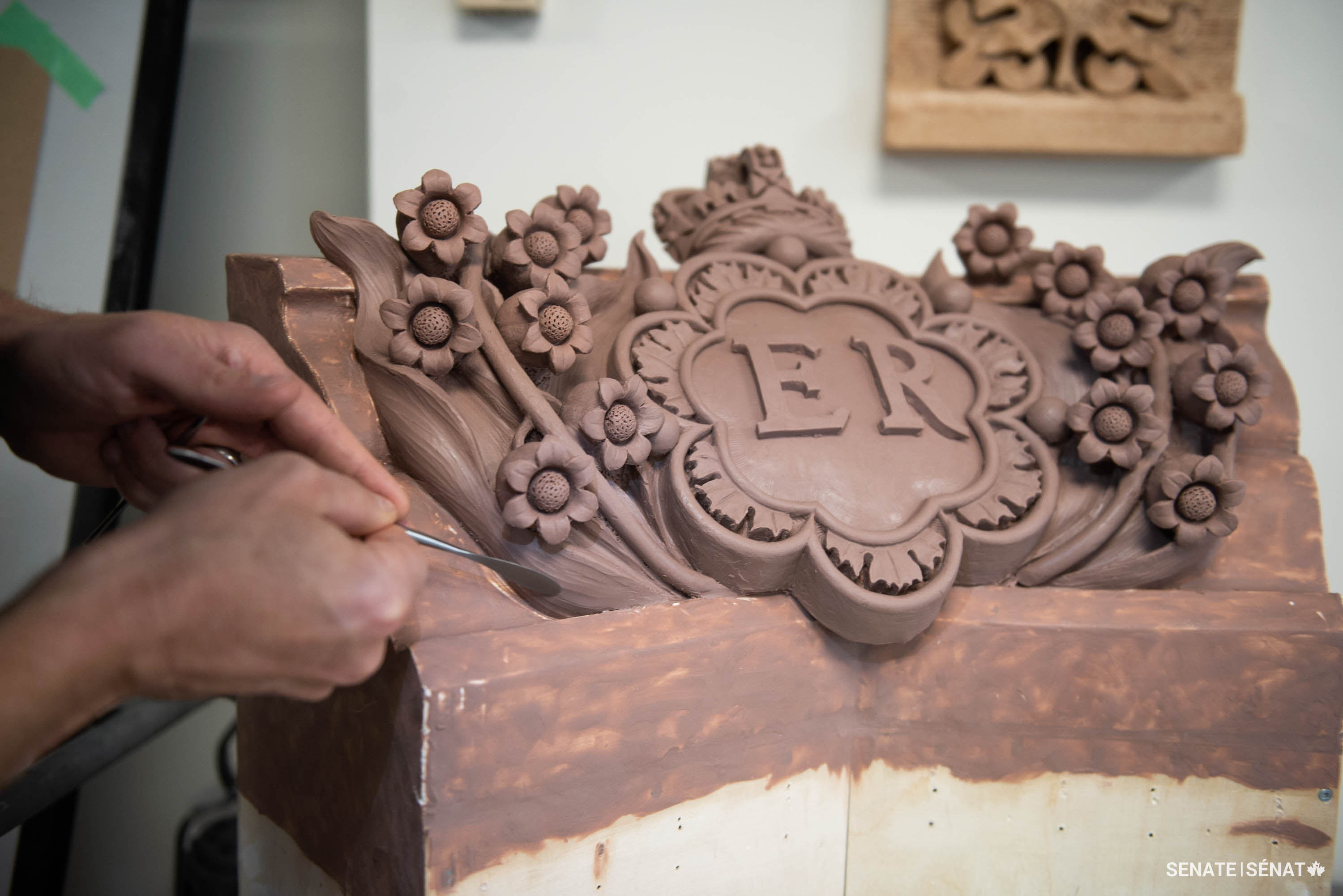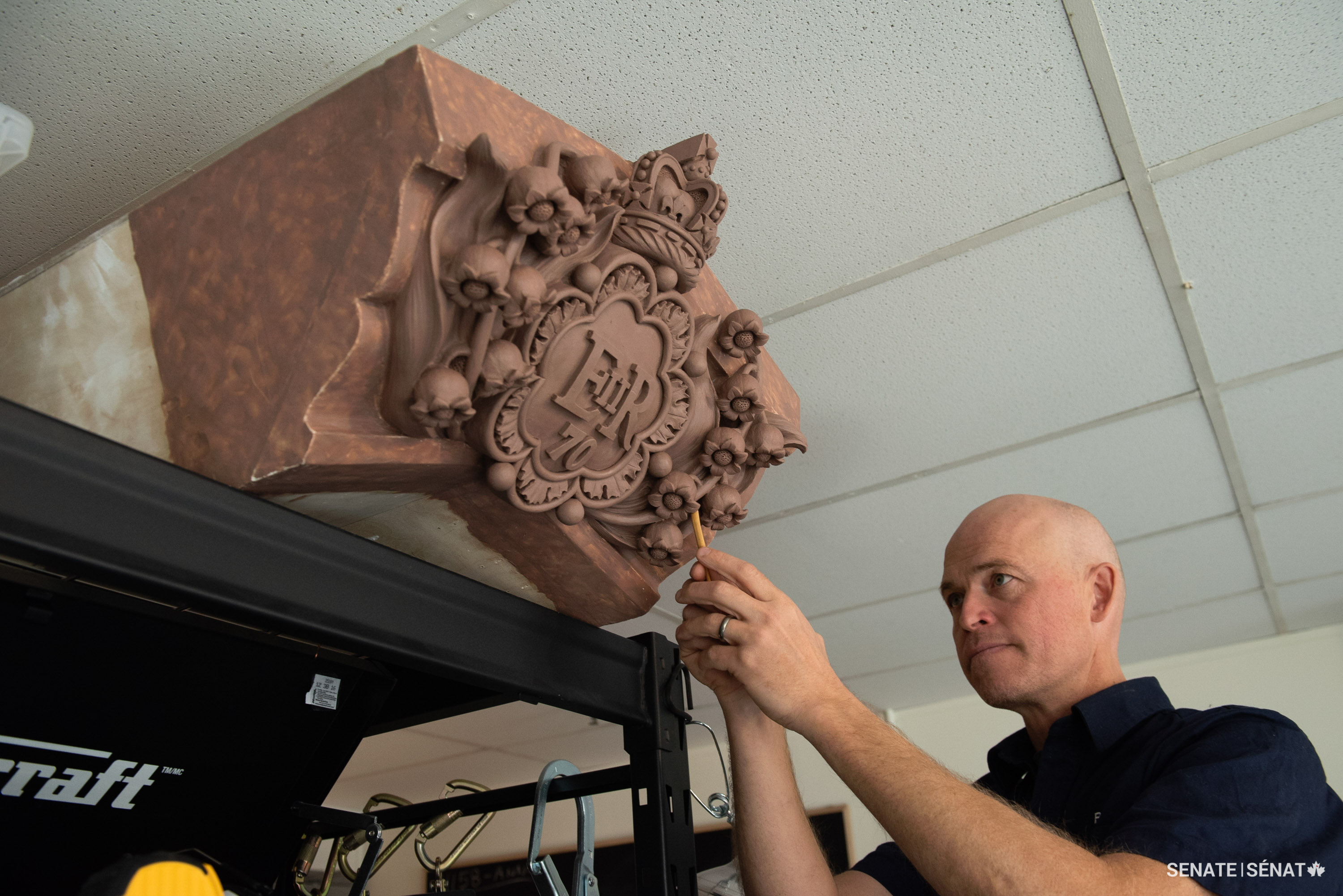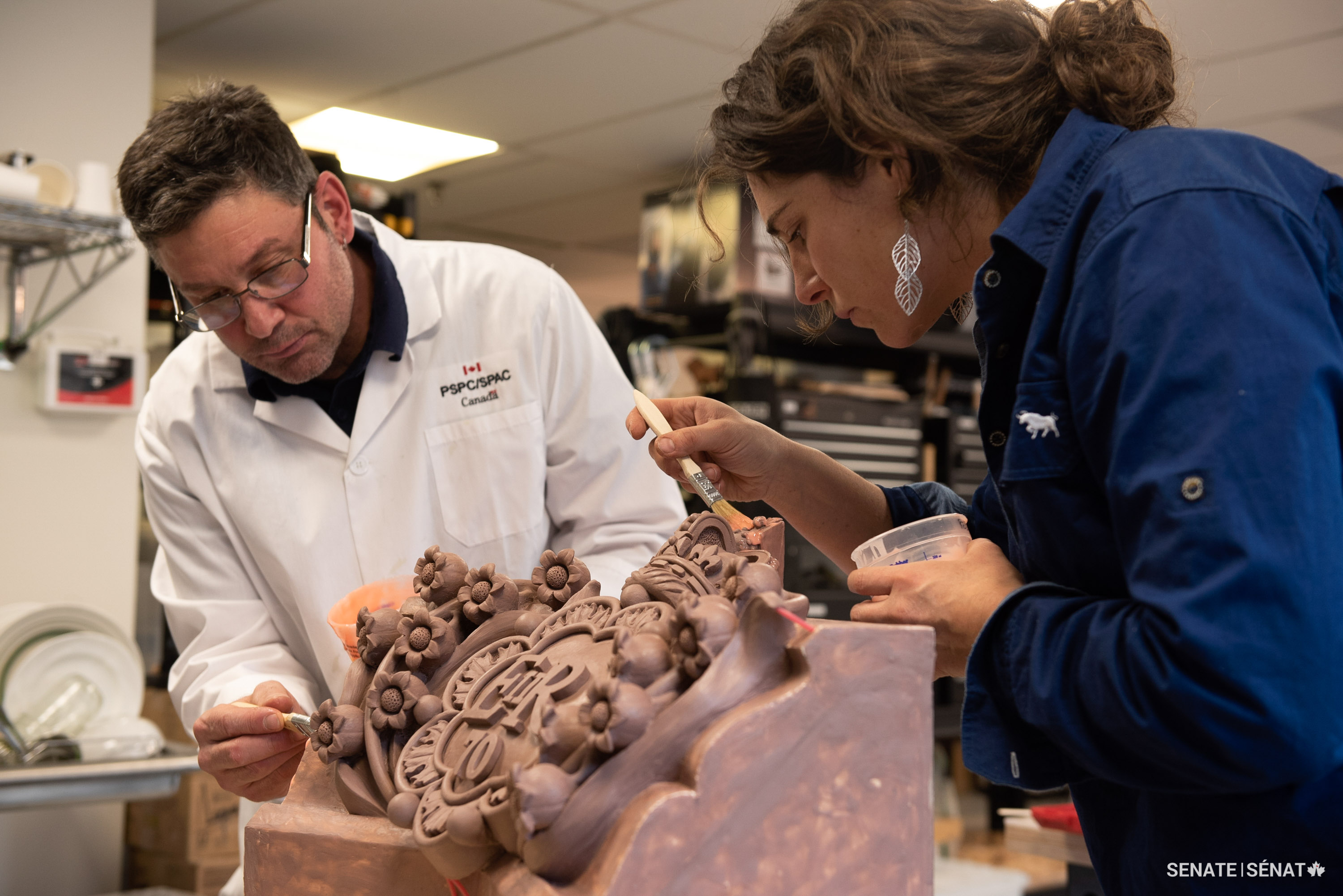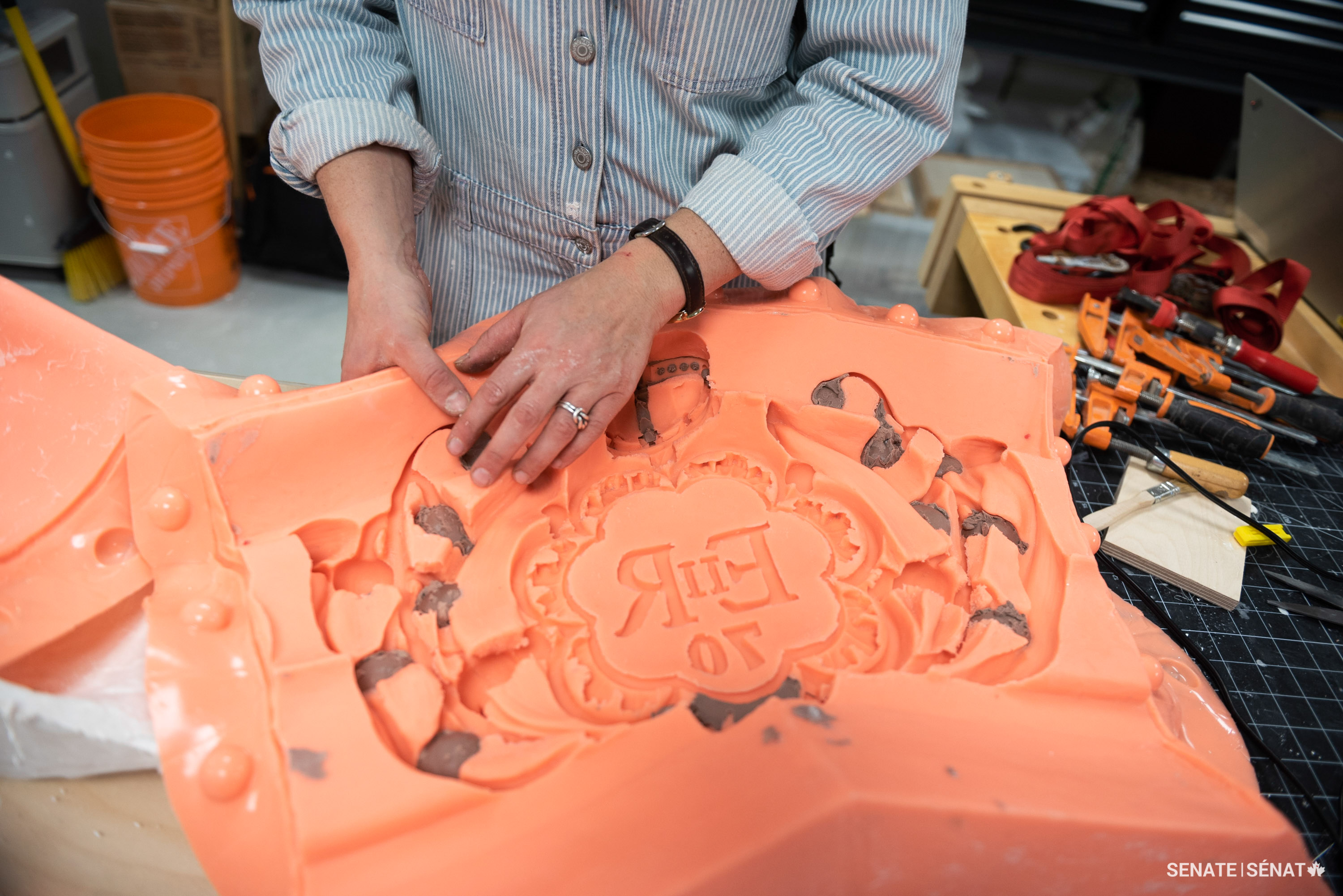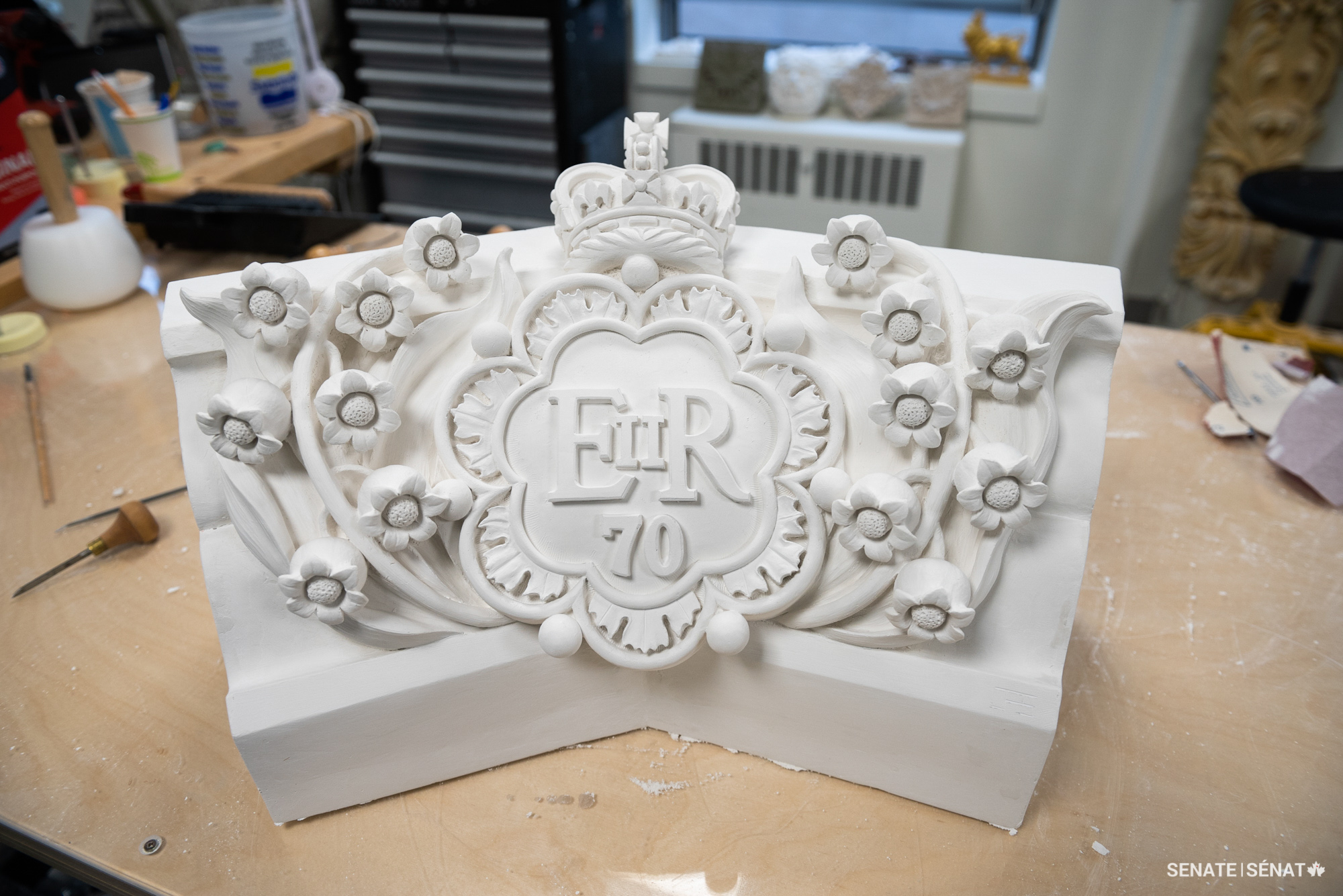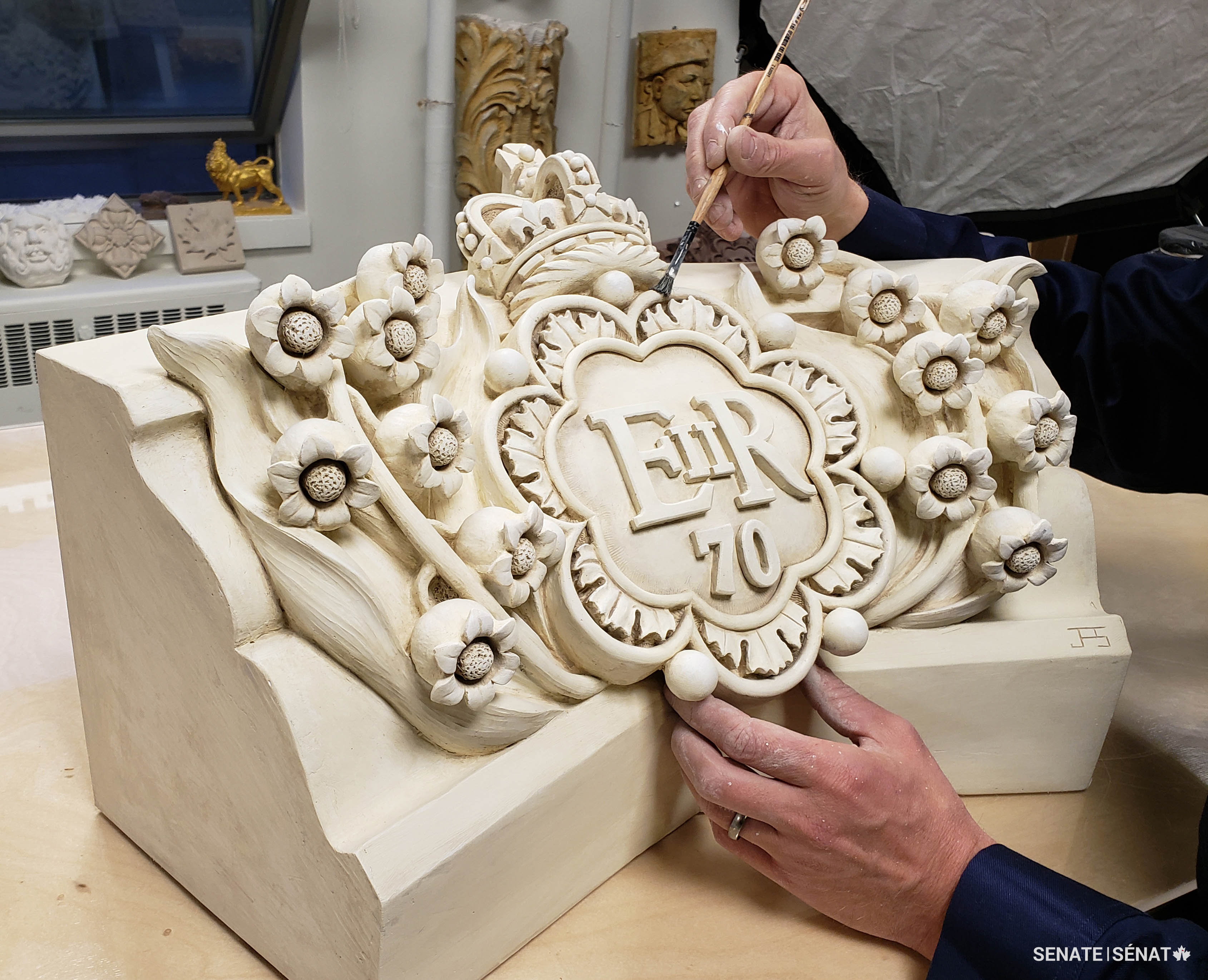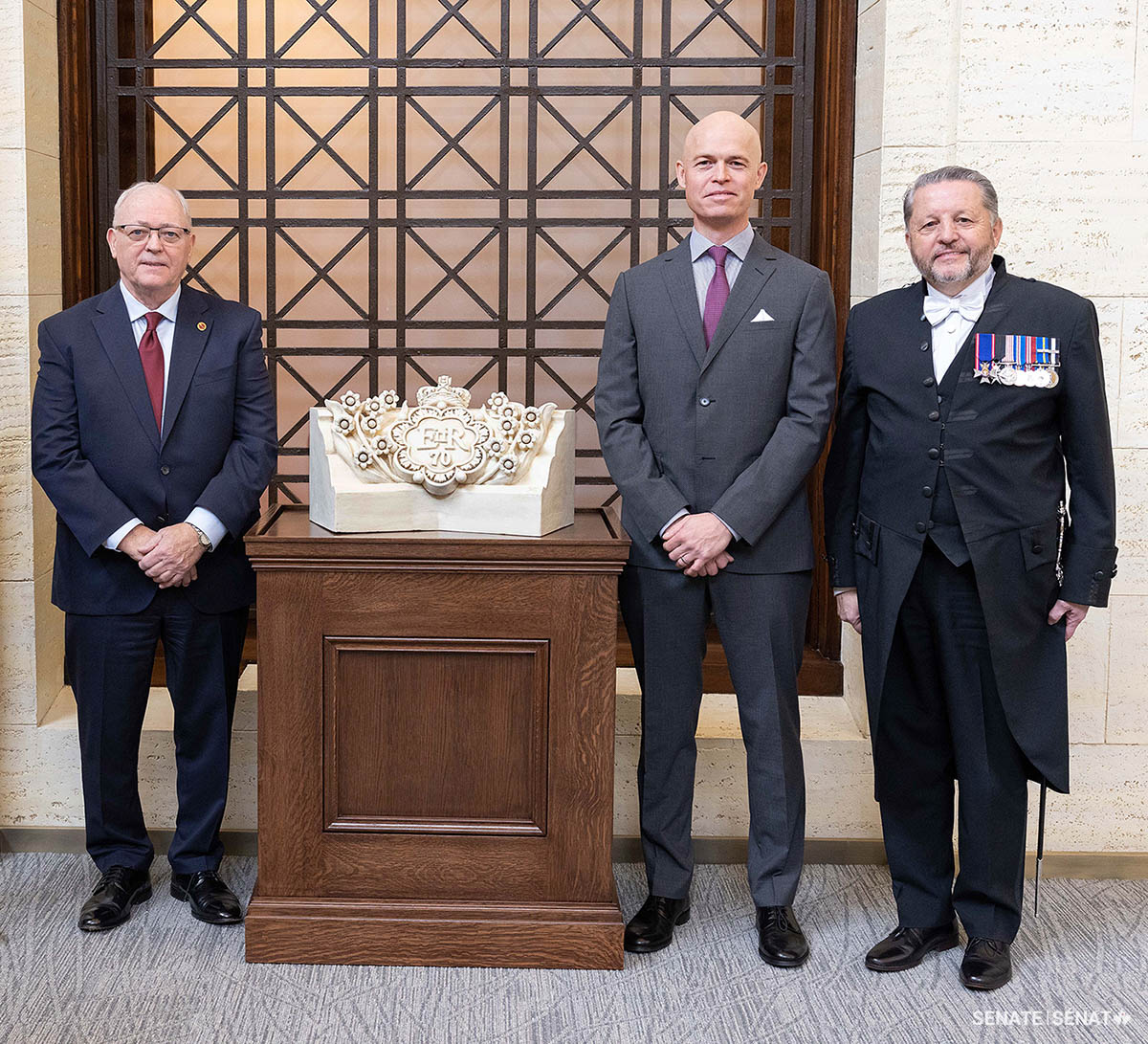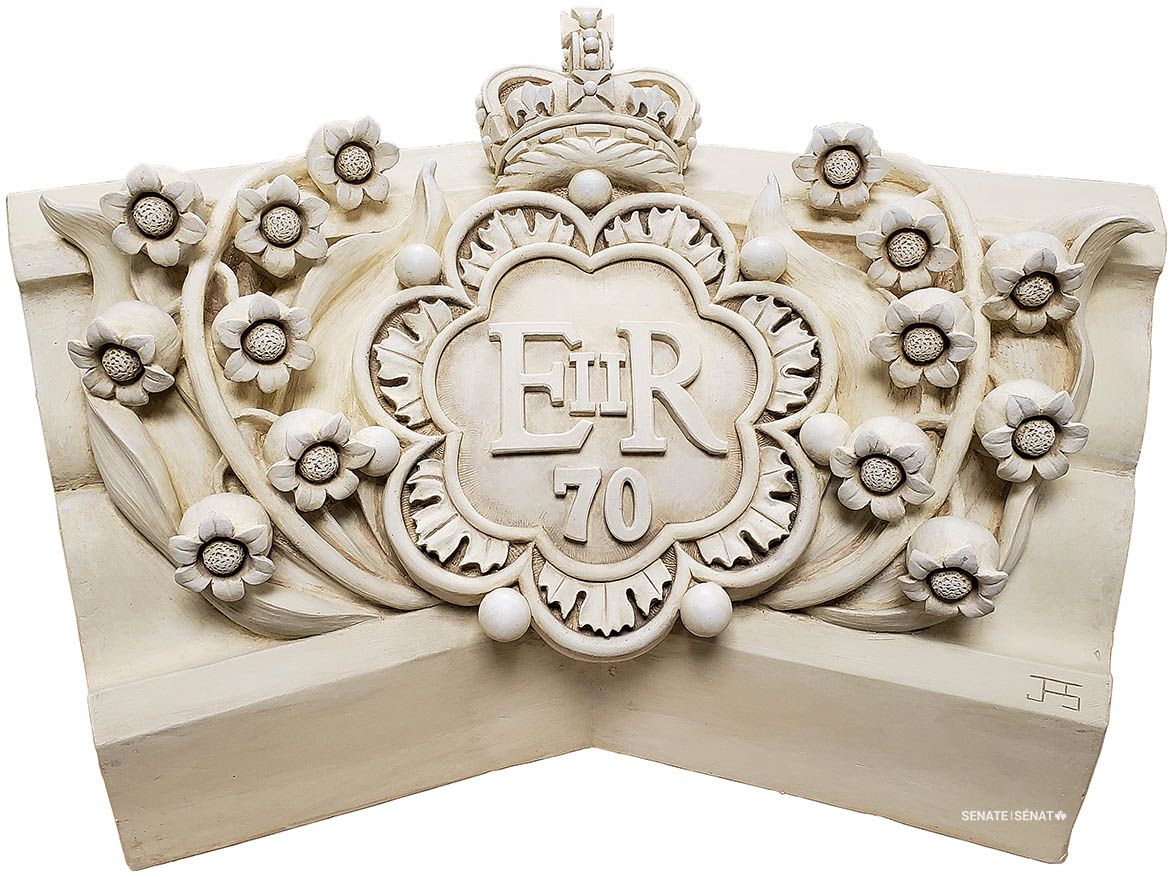A sculptural tribute to Canada’s late Queen

In February 2019, the Senate moved to the Senate of Canada Building, a former train station built in 1912. The Senate will occupy this temporary location while Parliament’s Centre Block — the Senate’s permanent home — is rehabilitated.
Although Centre Block is shuttered for rehabilitation work, Canadians can still experience its art and architecture through the Senate’s immersive virtual tour.
It will be an enduring tribute to Canada’s late queen.
A new commemorative sculpture honouring Queen Elizabeth II’s 70-year reign has gone on display in the Senate of Canada Building. Crafted by Dominion Sculptor John-Philippe Smith, it began to take shape last winter, when celebrations for the Queen’s Platinum Jubilee were in the planning stages. When the Queen passed away in September 2022, the piece became a tribute to her life of service.
This sculpture is actually a preliminary version, cast in plaster and finished with a stonelike patina. When Centre Block is fully restored, a final stone version of the sculpture will feature prominently in the Senate foyer.
It will be a striking reminder of a historic reign that encompassed 22 royal tours of Canada and shaped defining moments in the country’s history, including Canada’s Centennial celebrations in 1967 and the patriation of its Constitution in 1982.
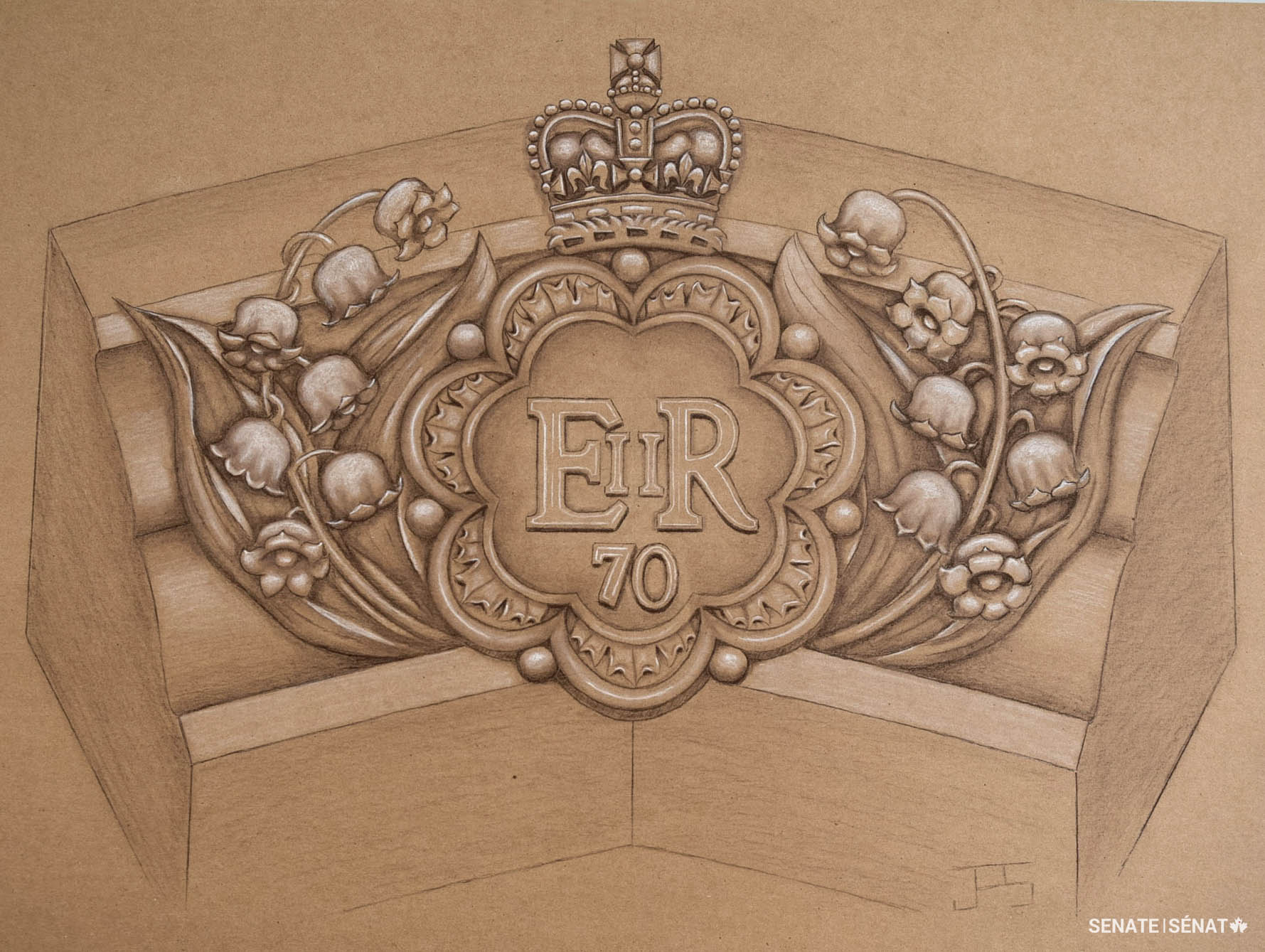
Mr. Smith has completed several pieces since arriving on the Hill as an assistant carver in 2018. This will be his first since being named Dominion Sculptor in July 2021.
He sketched several proposals; one based on the Canadian Platinum Jubilee emblem caught the attention of Senate officials, including the Speaker of the Senate and the Usher of the Black Rod.
The emblem has been flying over federal landmarks, including the Senate of Canada Building, throughout the Queen’s Jubilee and it has become symbolic of the culmination of her reign. The design — the crown of St. Edward surmounting a seven-sided medallion bearing the Queen’s royal cypher — lent itself well to sculptural interpretation, but Mr. Smith worried it might be overshadowed in the richly decorated Senate foyer.
“It needed something personal to round out the design,” he said. “The Usher of the Black Rod consulted with the Royal Household and suggested the Queen’s favourite flower, the lily of the valley.”


Mr. Smith spent November working up the preliminary sculpture in clay, adding clusters of lilies — seven of them, marking seven decades on the throne — on either side of the emblem.
The next step: making a plaster duplicate. Mr. Smith and his team created a synthetic mould, brushing layer upon layer of liquid silicone over the clay model.
The silicone cures in a few days, forming a flexible casing in which to cast a durable plaster copy, called a maquette.
The maquette is a work of art on its own, nearly indistinguishable from stone. It went on display in early December just inside the entrance to the Senate of Canada Building, where it will remain while the Red Chamber occupies the building.
A second maquette will serve as a template for the final carving in stone. When that piece is installed in Centre Block, it will occupy a privileged vantage, serving as the keystone that ties together the six-metre arch spanning the entrance at the south end of the Senate foyer.
“This is a rare opportunity,” said Mr. Smith. “We’re creating a sculpture for a part of Centre Block that wasn’t originally designated for carving.”
Mr. Smith acknowledges that a lot of work remains before Centre Block’s stone version is completed and mounted.
“The carving has taken on added significance since the Queen’s death,” Mr. Smith said, “but I try not to let myself get caught up in that while I’m working. It will likely sink in once it’s done and I’m looking at the finished piece.”
